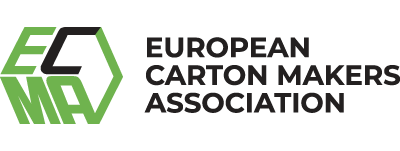ECMA Statement Regarding the Announced Harmonised Measure on Printed Food Contact Materials - February 2017
Harmonised measures for inks and paper and board
In general ECMA is in favour of harmonised measures instead of the development of a patchwork of national legislative initiatives. In particular ECMA supports the current efforts to have harmonised measures for inks and paper and board.
Adequate information is necessary
At many occasions ECMA has also been and continues to strongly advocate in favour of clear and fair communication in the FCM supply chains. To perform the required further compliance work, downstream users definitely need to obtain adequate information from their suppliers. This information needs to include the confirmation the delivered materials are compliant with legislation, the confirmation of the suitability for the indicated applications and, for assessing the compliance of the finished carton (combining different materials) the CAS No identification of all potentially migrating substances, including the not intentionally added substances which may appear. To allow cost efficient compliance work also the concentration level of the potentially migrating substances needs to be shared, according to rules to be agreed between the parties involved. In addition, inappropriate disclaimers should be prohibited.
Migration from different sources
Assuming the announced harmonised measure on printed food contact materials is in essence a measure on inks, probably lists with substances to use for developing printing inks for food contact applications, will be included. As for other pieces of legislation, this would for converters lead to the difficulty printed cartons will have to comply with migration limits included in the substance list for developing inks. Those same substances may however also migrate from other materials used, without the possibility to differentiate between the different sources.
Proposal to simplify the legislation
Based on the previous observation, the ECMA Technical Committee wonders whether it would not bring clarity if just one general union list of substances would be adopted for use in food contact materials. From a food safety perspective, it is about the contaminants present in the food and originating from the food contact materials about the substances which may migrate from any type of material used. (paper and board, plastics, metals, inks, etc. ...) This would definitely simplify the legislation. Alongside such a unified list, separate harmonised material specific ways to assess compliance need to be adopted. An Industry Taskforce is currently developing a document on test procedures for the so far not yet harmonised food contact materials. Testing procedures and simulants used for certain materials, are indeed not appropriate for other food contact materials.
EFSA needs to be steering the whole process
In a well harmonised overall approach, EFSA needs to be given the steering role for assessing the safety of substances declared by the FCM supplying sectors. Member States need to collaborate and agree in the key expert EFSA panels.
JRC baseline study
As the recently released JRC baseline study is indicating such a unique list approach would lead to a vast inventory of substances used in the different food contact materials. In the impossibility to go through a full toxicological assessment for all listed substances, all modern assessment tools should to be allowed to bring the best feasible safety level. At recent scientific food safety conferences, it was very well highlighted how with the use of advanced in silico tools, it is possible to identify potential substances of concern and starting from there to prioritize the toxicological testing, how modelling allows to assess the migration which may occur from food contact materials and to assess the exposure, and also how bioassay testing can contribute to increase food safety.
February 2017
